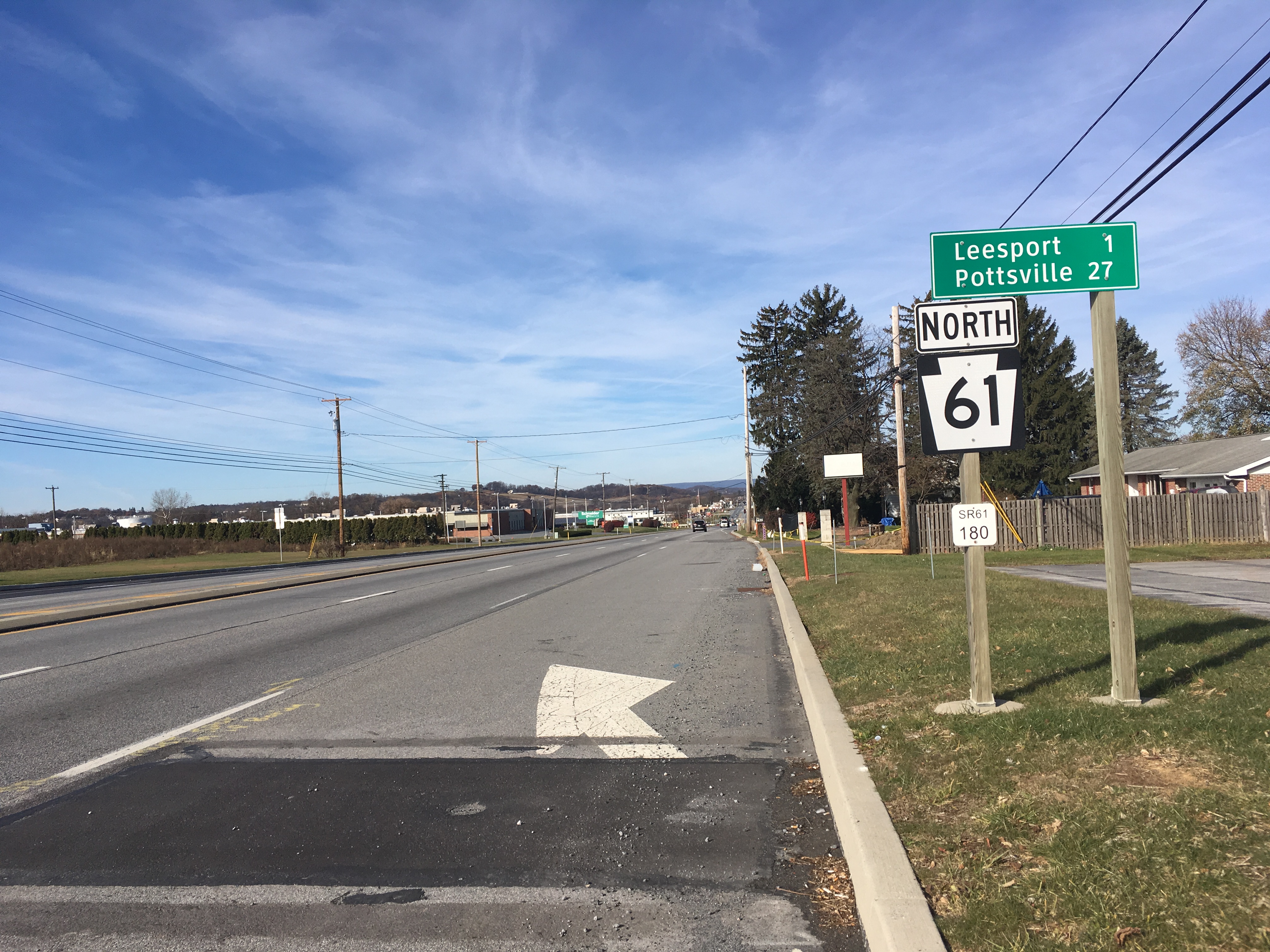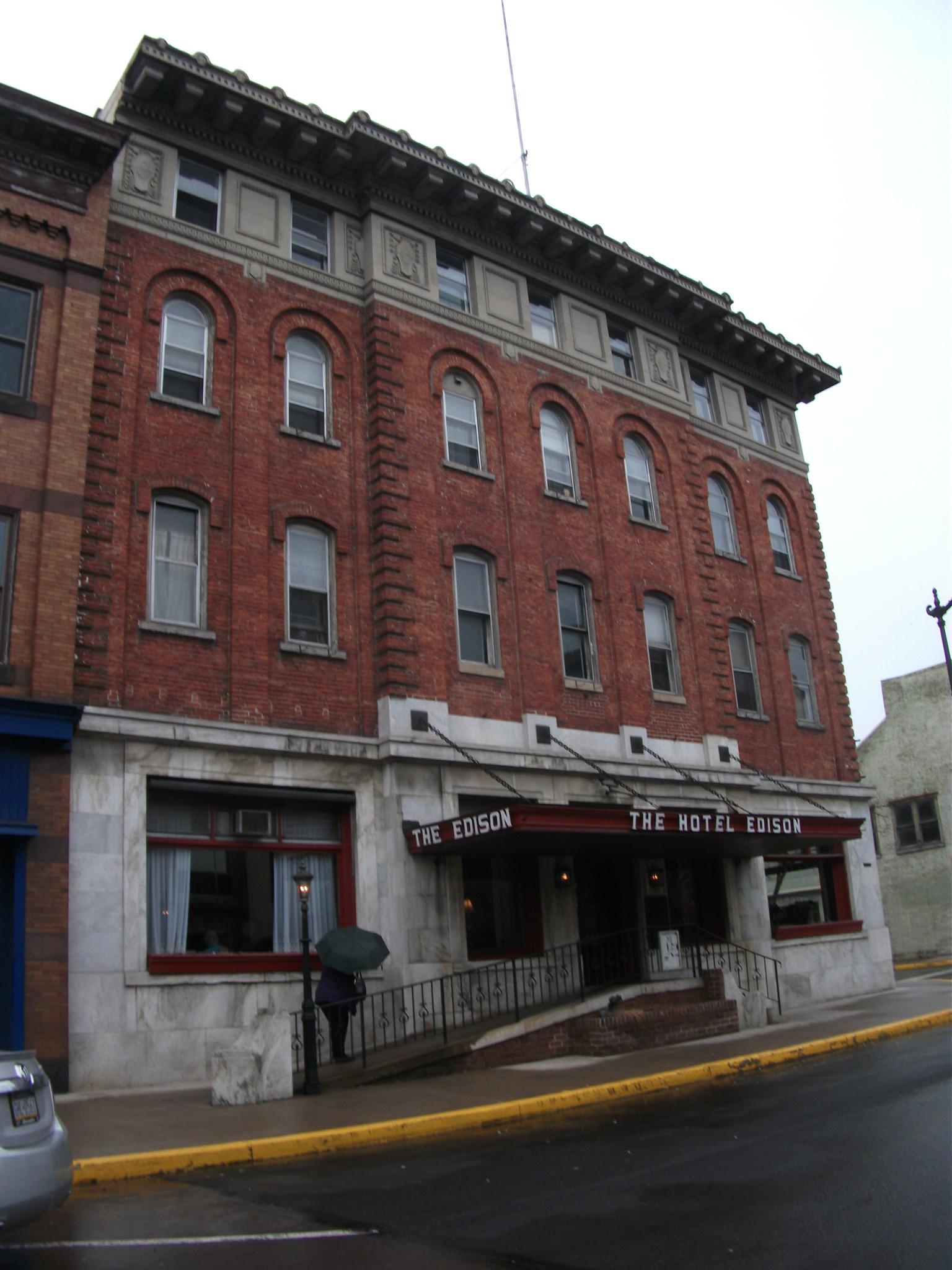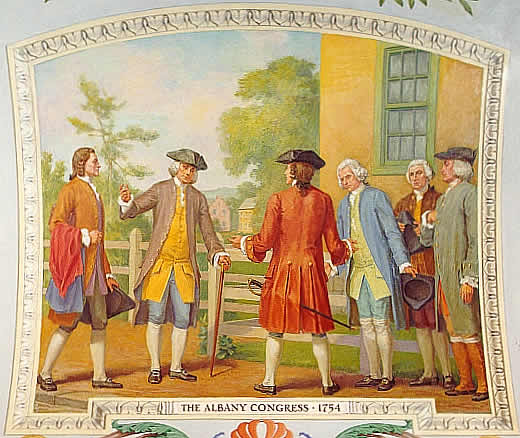|
Sunbury, Pennsylvania
Sunbury ( ) is a city and the county seat of Northumberland County in Pennsylvania, United States. Located in the Susquehanna Valley, Sunbury is positioned on the east bank of the Susquehanna River. Sunbury's roots stretch back to the early 18th century. As of the 2010 census, it had a population of 9,905. The city is one of the three principal cities in the larger Bloomsburg-Berwick-Sunbury, PA Combined Statistical Area. Sunbury is connected to inventor Thomas Edison. In 1883, the Hotel Edison became the first building in Sunbury to be illuminated by Edison's innovative three-wire electrical system. The hotel was later named in honor of Edison. Sunbury is home to the Beck House and the Northumberland County Courthouse. The Sunbury Historic District is listed on the National Register of Historic Places. History The first human settlement of Sunbury were likely Shawnee migrants.Weslager, C. A. (1972). The Delaware Indians: A History. Rutgers University Press: News ... [...More Info...] [...Related Items...] OR: [Wikipedia] [Google] [Baidu] |
Pennsylvania Route 61
Pennsylvania Route 61 (PA 61) is an state highway that is located in Pennsylvania in the United States. The route is signed north-south despite running in a northwest-southeast direction from U.S. Route 222 Business (Reading, Pennsylvania), U.S. Route 222 Business (US 222 Bus.) in Reading, Pennsylvania, Reading to U.S. Route 11 (Pennsylvania), US 11/U.S. Route 15 (Pennsylvania), US 15/Pennsylvania Route 147, PA 147 in Shamokin Dam, Pennsylvania, Shamokin Dam. PA 61 heads north from Reading through Berks County, Pennsylvania, Berks County to Hamburg, Pennsylvania, Hamburg, where it meets Interstate 78 in Pennsylvania, Interstate 78 (I-78)/U.S. Route 22 in Pennsylvania, US 22. The route continues into the Coal Region in Schuylkill County, Pennsylvania, Schuylkill County and heads through Schuylkill Haven, Pennsylvania, Schuylkill Haven, Pottsville, Pennsylvania, Pottsville, Frackville, Pennsylvania, Frackville, where it has an interchange with Interstate 81 i ... [...More Info...] [...Related Items...] OR: [Wikipedia] [Google] [Baidu] |
Edison Hotel (Sunbury, Pennsylvania)
The Hotel Edison in Sunbury, Pennsylvania was built in 1871 by entrepreneur Edward T. Drumheller and opened as the City Hotel in January 1872. It was the first building to be lit with Thomas Edison's three-wire system in July 1883. Renamed the Hotel Edison in 1922 during Sunbury's 150th anniversary, it has fifty-one rooms and fifteen residential apartments, and is located on Fourth and Market Streets.Jason KlosThe Edison Hotel: A Bright and Colorful History Spring 2009 City of Sunbury Website History Built in 1871, the City Hotel was known for its high quality lodging and fine dining, and also had one of the first commercial elevators in the United States hotel system. During this early phase of operations, the hotel had forty guest rooms on its second and third floors and offered two payment plans: a pay-by-the-day "American plan" and an extended-stay "European plan." The hotel's carriage house, which was built as a separate structure around the same time as the City Hotel, w ... [...More Info...] [...Related Items...] OR: [Wikipedia] [Google] [Baidu] |
Teedyuscung
Teedyuscung (c. 1700–1763) was known as "King of the Delawares". He worked to establish a permanent Lenape (Delaware) home in eastern Pennsylvania in the Lehigh, Susquehanna, and Delaware River valleys. Teedyuscung participated in the Treaty of Easton, which resulted in the surrender of Lenape claims to all lands in Pennsylvania. Following the treaty, the Lenape were forced to live under the control of the Iroquois in the Wyoming Valley near modern-day Wilkes-Barre. Teedyuscung was murdered by arsonists in the night of April 19, 1763. This marked the beginning of the end of the Lenape presence in Pennsylvania. Teedyuscung's son Chief Bull conducted a raid on the Wyoming Valley that was part of a greater Indian uprising. As a result, the Lenape were forced to move west of the Appalachian Mountains by the Royal Proclamation of 1763. Early life Teedyuscung, whose name means "as far as the wood's edge", was born circa 1700 near present-day Trenton, New Jersey. He was raised amo ... [...More Info...] [...Related Items...] OR: [Wikipedia] [Google] [Baidu] |
Albany Congress
The Albany Congress (June 19 – July 11, 1754), also known as the Albany Convention of 1754, was a meeting of representatives sent by the legislatures of seven of the British colonies in British America: Connecticut Colony, Connecticut, Province of Maryland, Maryland, Province of Massachusetts Bay, Massachusetts, Province of New Hampshire, New Hampshire, Province of New York, New York, Province of Pennsylvania, Pennsylvania, and Colony of Rhode Island and Providence Plantations, Rhode Island. Those not in attendance included Newfoundland Colony, Newfoundland, History of Nova Scotia, Nova Scotia, Province of New Jersey, New Jersey, Colony of Virginia, Virginia, Colony of Georgia, Georgia, Colony of North Carolina, North Carolina, and Colony of South Carolina, South Carolina. Representatives met daily at the Albany City Hall, City Hall () in Albany, New York, from June 19 to July 11, 1754, to discuss better relations with the Native Americans in the United States, Native America ... [...More Info...] [...Related Items...] OR: [Wikipedia] [Google] [Baidu] |
David Brainerd
David Brainerd (April 20, 1718October 9, 1747) was an American Presbyterian minister and missionary to the Native Americans among the Delaware Indians of New Jersey. Missionaries such as William Carey and Jim Elliot, and Brainerd's cousin, the Second Great Awakening evangelist James Brainerd Taylor (1801–1829) cite Brainerd as inspiration. Biography Early life David Brainerd was born on April 20, 1718, in Haddam, Connecticut, the son of Hezekiah Brainerd, a Connecticut legislator, and Dorothy Hobart. He had nine siblings, one of whom was Dorothy's from a previous marriage. He was orphaned a month before his fourteenth birthday. His father died in 1727 at the age of 46 and his mother died five years later. After his mother's death, Brainerd moved to East Haddam to live with one of his older sisters, Jerusha. At the age of nineteen, he inherited a farm near Durham, but returned to East Haddam a year later to prepare to enter Yale. On July 12, 1739, he recorded having an ... [...More Info...] [...Related Items...] OR: [Wikipedia] [Google] [Baidu] |
Shamokin, Pennsylvania
Shamokin - (; Saponi Algonquian languages, Algonquian ''Schahamokink'', meaning "place of eels") (Unami language, Lenape Indian language: Shahëmokink) is a city in Northumberland County, Pennsylvania, United States. Surrounded by Coal Township, Northumberland County, Pennsylvania, Coal Township at the western edge of the Coal Region, Anthracite Coal Region in central Pennsylvania's Susquehanna River Valley, the city was named after a Saponi people, Saponi Indian village, Shamokin (village), Schahamokink. At the 2020 United States census, the population was 6,942. History The first humans to settle Shamokin were probably Shawnee migrants. 18th century A large population of Lenape, Lenape Indians (also known as Delaware Indians) resettled there in the early 18th century after the Walking Purchase along the eastern border of the colonial Province of Pennsylvania in the upper northern reaches of the Delaware River in 1737. Canasatego of the Iroquois, Six Nations, enforcing the Wa ... [...More Info...] [...Related Items...] OR: [Wikipedia] [Google] [Baidu] |
Shamokin (village)
Shamokin (; Saponi Algonquian languages, Algonquian ''Schahamokink'': "place of crawfish") (Unami language, Lenape: Shahëmokink) was a multi-ethnic Native Americans in the United States, Native American trading village on the Susquehanna River, located partially within the limits of the modern cities of Sunbury, Pennsylvania, Sunbury and Shamokin Dam, Pennsylvania. It should not be confused with present-day Shamokin, Pennsylvania, located to the east. The village was the focus of missionary efforts, and then was the staging area for raids on English settlements in Pennsylvania during the French and Indian War. It was burned and abandoned by the Lenape in May, 1756. A few months later, Fort Augusta was constructed on the site of the village. Etymology "Shamokin" is usually described as derived from ''Schahamokink'' or ''Shahëmokink'', ("place of crawfish") but it may be also a variant of the Lenape term ''Treaty of Shackamaxon, Shackamaxon'', from the Lenape term ''Sakimauchhee ... [...More Info...] [...Related Items...] OR: [Wikipedia] [Google] [Baidu] |
Canassatego
Canassatego (c. 1684–1750; also spelled ''Canasatego'') was a leader of the Onondaga nation who became a prominent diplomat and spokesman of the Iroquois Confederacy in the 1740s. He was involved in several controversial land sales to colonial British officials. He is now best known for a speech he gave at the 1744 Treaty of Lancaster, where he recommended that the British colonies emulate the Iroquois by forming a confederacy. He was reportedly assassinated, perhaps by sympathizers or agents of New France. Early career Canassatego appears in British historical documents only during the last eight years of his life, and so little is known of his early life.Starna, 145. His earliest documented appearance is at a treaty conference in Philadelphia in 1742, where he was a spokesman for the Onondaga people, one of the six nations of the Iroquois (Haudenosaunee) League. According to most modern scholars, Canassatego did not appear to be one of the fourteen Onondaga hereditary sachem ... [...More Info...] [...Related Items...] OR: [Wikipedia] [Google] [Baidu] |
Walking Purchase
The Walking Purchase, also known as the Walking Treaty, was a 1737 agreement between the family of William Penn, the original proprietor of the Province of Pennsylvania, and the Lenape native Indians. In the purchase, the Penn family and proprietors produced a deed to claim that a 1686 treaty with the Lenape ceded an area of 1,200,000 acres (4,860 km2) in present-day Lehigh Valley and Northeastern Pennsylvania in colonial Pennsylvania, which included a western land boundary extending as far west as a man could walk in a day and a half, which led to its name. The area is along the northern reaches of the Delaware River, on Pennsylvania's border with what was called, at the time, West Jersey. ''Encyclopædia Britannica'' refers to the treaty as a "land swindle". The Lenape appealed to the Iroquois Indian tribe to their north for aid on the issue, but the Iroquois refused their request, ultimately siding with the Penn interests. Nearly 300 years later, in 2004, a lawsuit was fi ... [...More Info...] [...Related Items...] OR: [Wikipedia] [Google] [Baidu] |
Thomas Edison Monument On Packers Island
Thomas may refer to: People * List of people with given name Thomas * Thomas (name) * Thomas (surname) * Saint Thomas (other) * Thomas Aquinas (1225–1274) Italian Dominican friar, philosopher, and Doctor of the Church * Thomas the Apostle * Thomas (bishop of the East Angles) (fl. 640s–650s), medieval Bishop of the East Angles * Thomas (Archdeacon of Barnstaple) (fl. 1203), Archdeacon of Barnstaple * Thomas, Count of Perche (1195–1217), Count of Perche * Thomas (bishop of Finland) (1248), first known Bishop of Finland * Thomas, Earl of Mar (1330–1377), 14th-century Earl, Aberdeen, Scotland Geography Places in the United States * Thomas, Idaho * Thomas, Illinois * Thomas, Oklahoma * Thomas, Oregon * Thomas, South Dakota * Thomas, Virginia * Thomas, Washington * Thomas, West Virginia * Thomas County (other) * Thomas Township (other) Elsewhere * Thomas Glacier (Greenland) Arts and entertainment * ''Thomas'' (Burton novel), a 1969 novel by He ... [...More Info...] [...Related Items...] OR: [Wikipedia] [Google] [Baidu] |
Walking Path In Sunbury 2
Walking (also known as ambulation) is one of the main gaits of terrestrial locomotion among legged animals. Walking is typically slower than running and other gaits. Walking is defined as an "inverted pendulum" gait in which the body vaults over the stiff limb or limbs with each step. This applies regardless of the usable number of limbs—even arthropods, with six, eight, or more limbs, walk. In humans, walking has health benefits including improved mental health and reduced risk of cardiovascular disease and death. Difference from running The word ''walk'' is descended from the Old English ''wealcan'' 'to roll'. In humans and other bipeds, walking is generally distinguished from running in that only one foot at a time leaves contact with the ground and there is a period of double-support. In contrast, running begins when both feet are off the ground with each step. This distinction has the status of a formal requirement in competitive walking events. For quadrupedal specie ... [...More Info...] [...Related Items...] OR: [Wikipedia] [Google] [Baidu] |
National Register Of Historic Places
The National Register of Historic Places (NRHP) is the Federal government of the United States, United States federal government's official United States National Register of Historic Places listings, list of sites, buildings, structures, Historic districts in the United States, districts, and objects deemed worthy of Historic preservation, preservation for their historical significance or "great artistic value". The enactment of the National Historic Preservation Act (NHPA) in 1966 established the National Register and the process for adding properties to it. Of the more than one and a half million properties on the National Register, 95,000 are listed individually. The remainder are contributing property, contributing resources within historic district (United States), historic districts. For the most of its history, the National Register has been administered by the National Park Service (NPS), an agency within the United States Department of the Interior. Its goals are to ... [...More Info...] [...Related Items...] OR: [Wikipedia] [Google] [Baidu] |









